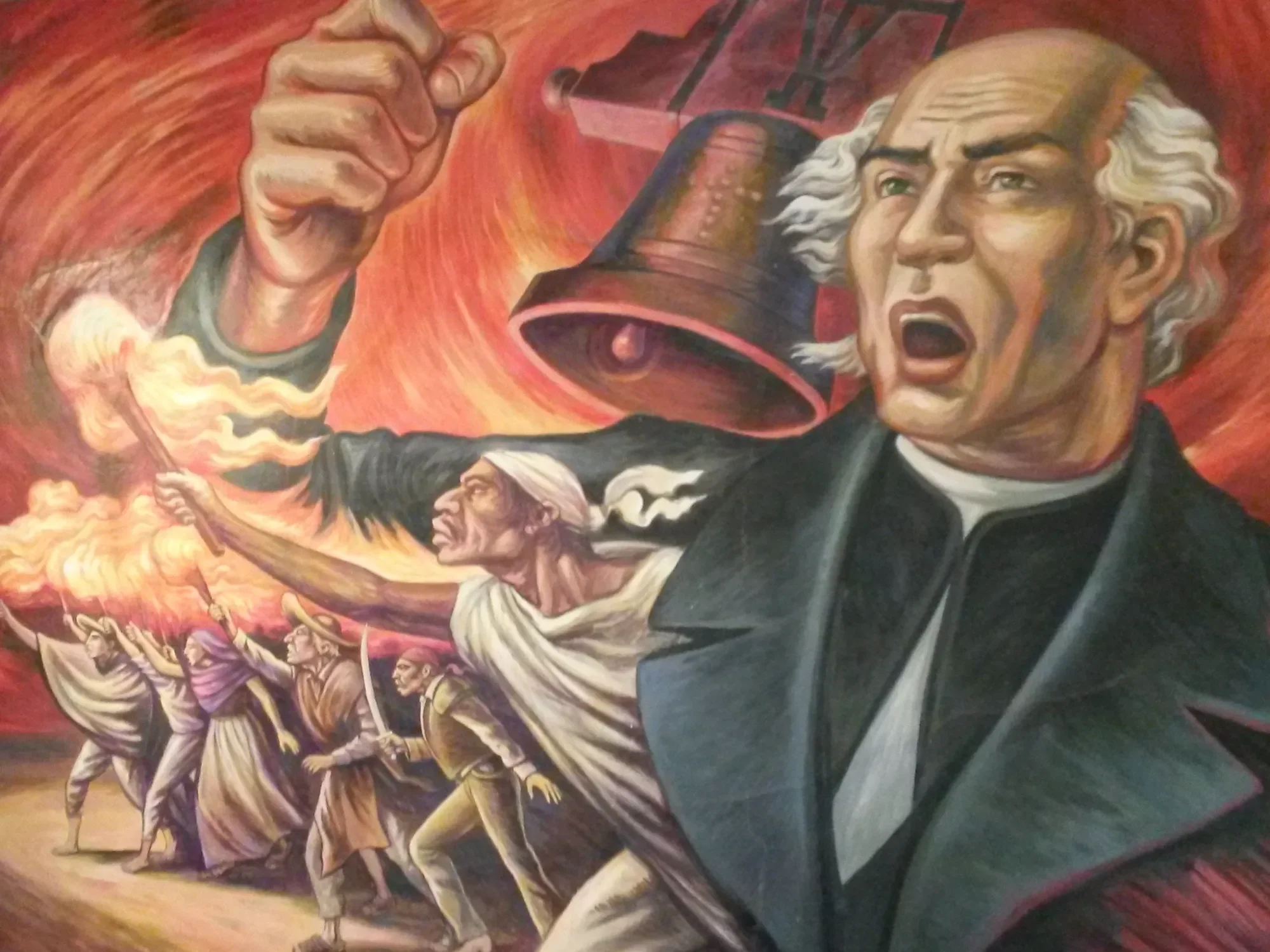
Mexican Independence
Father Miguel Hidalgo: The Cry for Mexican Independence
Imagine living in a country where most people work hard every day, but still have no power to change their lives. The government makes the rules, and a faraway king decides your future. That was life in New Spain, what we now call Mexico, in the early 1800s. But one brave man, Father Miguel Hidalgo, decided to speak up and demand freedom. His voice started a movement that would change Mexico forever.
A Priest Who Cared for His People
Miguel Hidalgo y Costilla was born in 1753 in a small town called Pénjamo, Mexico. He grew up to become a Catholic priest, but he wasn’t like most priests of his time. Father Hidalgo didn’t just lead prayers, he also cared deeply about the poor people in his parish. He saw that Spanish-born rulers (called peninsulares) had all the power and wealth, while the Native people and mestizos (people of mixed ancestry) were often treated unfairly and forced to work for very little pay.
Father Hidalgo believed that this was wrong. He wanted his people to have education, better jobs, and freedom. He taught farmers new ways to grow crops and helped them start small businesses. But these actions made the Spanish authorities suspicious of him.
"Action must be taken at once; there is no time to be lost; we shall yet see the oppressors' yoke broken and the fragments scattered on the ground."
— Father Miguel Hidalgo
The Cry for Freedom
By 1810, Father Hidalgo and other local leaders had grown tired of Spanish rule. On the night of September 15, 1810, he gathered the people of his town, Dolores, and gave a powerful speech that became known as “El Grito de Dolores” or “The Cry of Dolores.”
In his speech, Father Hidalgo called on the people to rise up and fight for their independence. He shouted,
“Long live our Lady of Guadalupe!
Death to bad government!
Long live Mexico!”
The crowd cheered, and soon thousands of men and women joined his cause. They marched with simple weapons: farm tools, sticks, and courage in their hearts. Though they weren’t trained soldiers, they were fighting for something bigger than themselves: freedom and equality.
The Struggle and the Legacy
Father Hidalgo’s movement faced many challenges. The Spanish army was powerful and well-armed. After months of fighting, Hidalgo was captured in 1811 and executed. But even though he didn’t live to see an independent Mexico, his actions had started something that could not be stopped.
Ten years later, in 1821, Mexico finally won its independence from Spain. People across the country remembered the priest who dared to speak up. Today, Father Miguel Hidalgo is known as the “Father of Mexican Independence.”
Every year on the night of September 15, the President of Mexico reenacts El Grito de Dolores from the balcony of the National Palace in Mexico City. Bells ring, flags wave, and people shout,
“¡Viva México!” or “Long live Mexico!”
It’s a moment of pride, reminding everyone that one voice, one brave leader, can inspire a nation to stand together for justice.
El Grito de Independencia 2025
Every year on September 15th, Mexico’s president reenacts Miguel Hidalgo’s Grito de Dolores. This is Claudia Sheinbaum enacting the tradition this past September. She is the first woman to be elected president of Mexico and is therefore the first woman to perform the Grito de Independencia.



